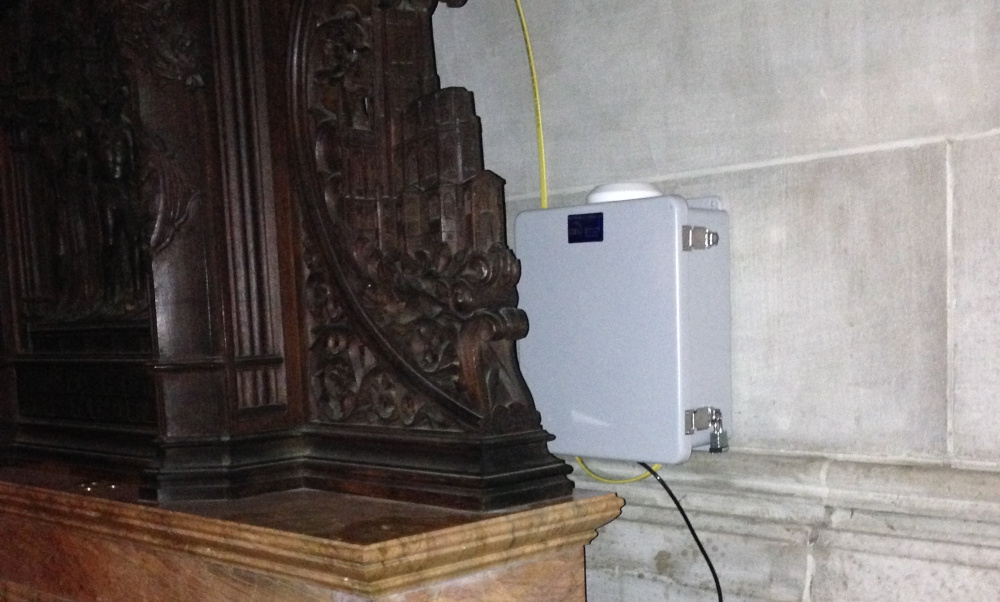- Historically sensitive structure
- High profile, sacred, and continuously operational site
- Extensive adjacent rock excavation
- Vibration monitoring of landmark building
This cathedral, on which construction began in 1892, is one of oldest in North America. It is noted for its elaborate façade towers, interior Gothic and Romanesque details, and 45-foot-tall stained-glass windows. St. John the Divine is the largest cathedral in the world, is a New York City Landmark building, and has global historic significance. Construction of a new super-structure on the north side of the church’s campus posed potential risk to this historically sensitive structure, and GZA was retained to design an instrumentation program to monitor for cracks and other damage.
Challenge
Vibrations caused by the extensive adjacent bedrock excavation and construction activity presented a risk of impact to surrounding structures, including the cathedral. Minimizing disruption to the continuously operational worship space was an additional complexity to the design and installation of the instrumentation program.
Solution
GZA’s instrumentation program included automated crack gauges, tiltmeters, survey monitoring points, and seismographs. During the eight-month program, GZA continuously monitored and reported data to multiple stakeholders, alerting them to exceedances. GZA consulted with the cathedral’s structural engineer, contractor, and the developer of the new structure regarding the crack and vibration criteria appropriate for the adjacent construction and safety of the cathedral. Access for installation was carefully scheduled around ongoing operations to minimize disruption, and all monitoring was done remotely, rather than collected manually. The program was custom-designed to place instruments as discreetly as possible so as not to intrude on the worship spaces, and innovative methods of sensor attachment were developed to protect the cathedral’s stone, granite, and limestone materials.

Benefit
With careful design and coordination with all stakeholders, vibrations and cracks were kept well within the project limits and with no damage to the cathedral.